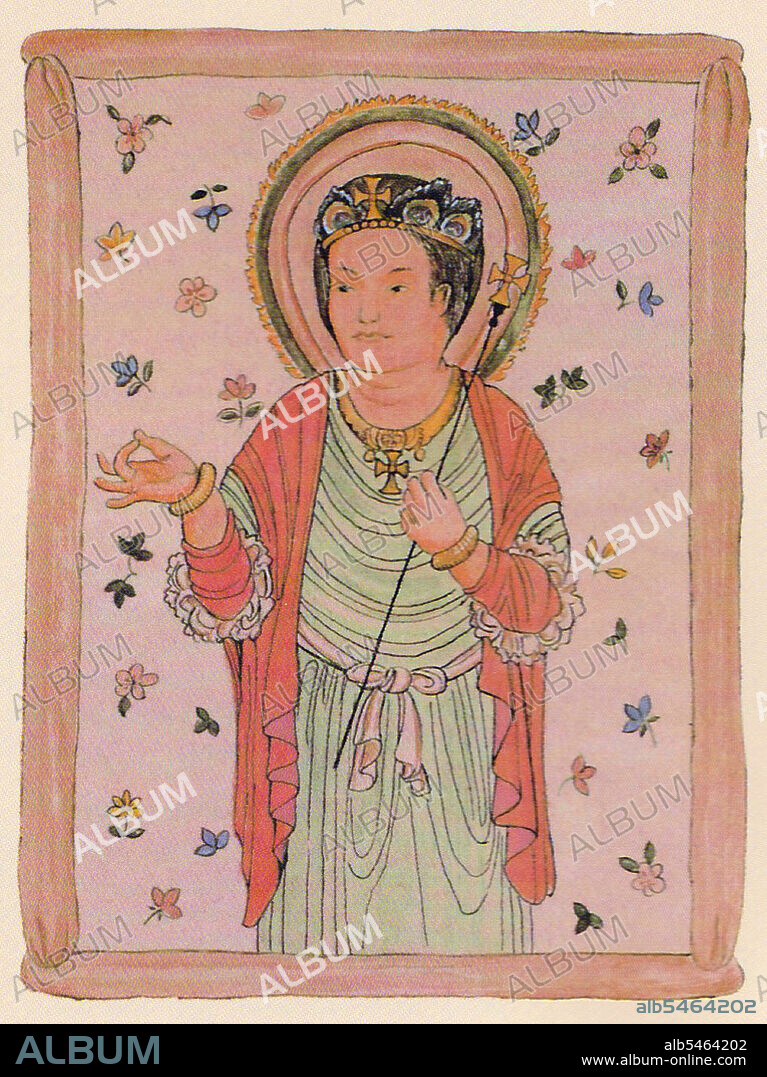alb5464202
China: Tang Dynasty painting of a Nestorian monk or missionary of the 'Church of the East'

|
Ajouter à une autre Lightbox |
|
Ajouter à une autre Lightbox |



Avez-vous déjà un compte? S'identifier
Vous n'avez pas de compte ? S'inscrire
Acheter cette image
Titre:
China: Tang Dynasty painting of a Nestorian monk or missionary of the 'Church of the East'
Légende:
Voir la traduction automatique
Nestorius developed his Christological views as an attempt to rationally explain and understand the incarnation of the divine Logos, the Second Person of the Holy Trinity as the man Jesus Christ. He had studied at the School of Antioch where his mentor had been Theodore of Mopsuestia; Theodore and other Antioch theologians had long taught a literalist interpretation of the Bible and stressed the distinctiveness of the human and divine natures of Jesus. Nestorius took his Antiochene leanings with him when he was appointed Patriarch of Constantinople by Eastern Roman Emperor Theodosius II in 428. Nestorius' teachings became the root of controversy when he publicly challenged the long-used title Theotokos (Mother of God) for the Virgin Mary. He suggested that the title denied Christ's full humanity, arguing instead that Jesus had two loosely joined natures, the divine Logos and the human Jesus. As such he proposed Christotokos (Mother of Christ) as a more suitable title for Mary. Nestorius' opponents found his teaching too close to the heresy of adoptionism – the idea that Christ had been born a man who had later been 'adopted' as God's son. Nestorius was especially criticized by Cyril, Pope (Patriarch) of Alexandria, who argued that Nestorius' teachings undermined the unity of Christ's divine and human natures at the Incarnation. Nestorius himself always insisted that his views were orthodox, though they were deemed heretical at the First Council of Ephesus in 431, leading to the Nestorian Schism, when churches supportive of Nestorius broke away from the rest of the Christian Church.
Crédit:
Album / Pictures From History/Universal Images Group
Autorisations:
Modèle: Non - Propriété: Non
Questions sur les droits?
Questions sur les droits?
Taille de l'image:
3600 x 4808 px | 49.5 MB
Taille d'impression:
30.5 x 40.7 cm | 12.0 x 16.0 in (300 dpi)
Mots clés:
ART (CATÉGORIE) • ART • ART, PEINTURE • ASIE • ASIE, CONTINENT • CHINE • CHINOIS • CHINOISE • CHRÉTIEN • CHRETIEN, CULTE • CHRÉTIENNE • CHRÉTIENS • CHRISTIANISME • CONTINENT ASIE • CULTE: CHRETIEN • HISOIRE • HISTOIRE • MISSIONAIRE • MISSIONNAIRE • MISSIONNAIRES • MOINE • MOINES • PEINTURE • RELIGION MISSIONNAIRES • RELIGION • RELIGION: CHRETIENNE • TABLEAU • TABLEAUX
 Pinterest
Pinterest Twitter
Twitter Facebook
Facebook Copier le lien
Copier le lien Email
Email
